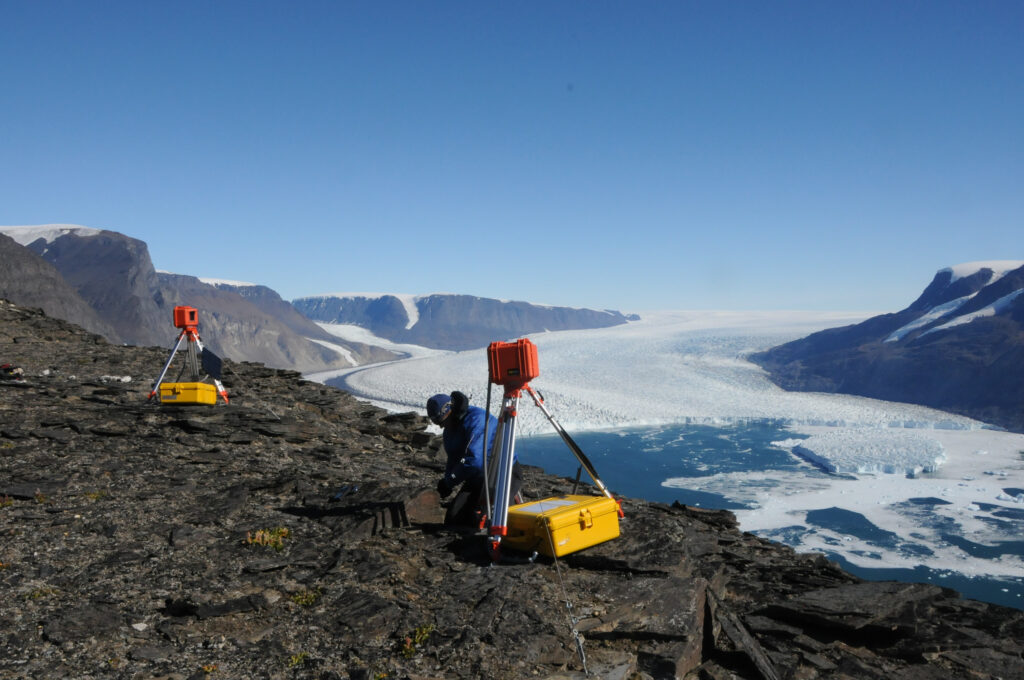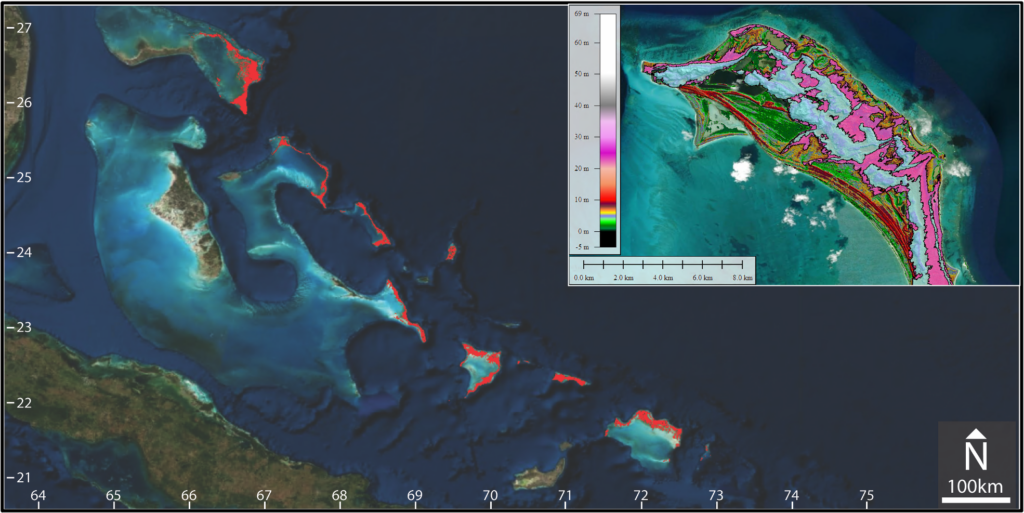The Gulf of Mexico holds huge untapped offshore oil deposits that could help power the U.S. for decades. The energy super basin’s longevity, whose giant offshore fields have reliably supplied consumers with oil and gas since the 1960s, is the result of a remarkable geologic past – a story that began 200 million years ago… Continue Reading Researchers Trace Geologic Origins of Gulf of Mexico ‘Super Basin’ Success
Greenland ‘Knickpoints’ Could Stall Spread of Glacial Thinning
The jagged terrain of Greenland’s mountains is protecting some of the island’s outlet glaciers from warm coastal waters, according to a team of researchers that included scientists from The University of Texas at Austin and NASA. Outlet glaciers protrude from the ice sheet into the sea, where surging ocean heat can speed up the loss… Continue Reading Greenland ‘Knickpoints’ Could Stall Spread of Glacial Thinning
New Certificate Program Brings Machine Learning to Geosciences
By Constantino Panagopulos A new certificate program at The University of Texas at Austin’s Jackson School of Geosciences will build critical skills for the geosciences workforce by training students and professionals to use modern data analytics tools and machine learning. Machine learning – a kind of artificial intelligence – helps geoscientists make better use of… Continue Reading New Certificate Program Brings Machine Learning to Geosciences
UTIG at AGU Fall Meeting 2020: Final Week
Week 3 December 14-17 Find week 1 and week 2 talks here. A weekly (incomplete) schedule of talks and posters by current (and recently former) UTIG staff and students. Notice something missing, get in touch! All times CST. Monday: Dec. 14 Eric Hiatt Groundwater filling times for large impact basins on early Mars and implications… Continue Reading UTIG at AGU Fall Meeting 2020: Final Week
UTIG at AGU Fall Meeting 2020
Weeks 1 and 2 December 3-11 Find week 3 talks here. A weekly (incomplete) schedule of talks and posters by current (and recently former) UTIG staff and students. Notice something missing, get in touch! All times CST. Thursday: Dec. 3 Pedro DiNezio(now at UC Boulder) 18:35 – 18:51 Improving predictions of Indian Ocean climate change… Continue Reading UTIG at AGU Fall Meeting 2020
- « Previous Page
- 1
- …
- 24
- 25
- 26
- 27
- 28
- …
- 64
- Next Page »





